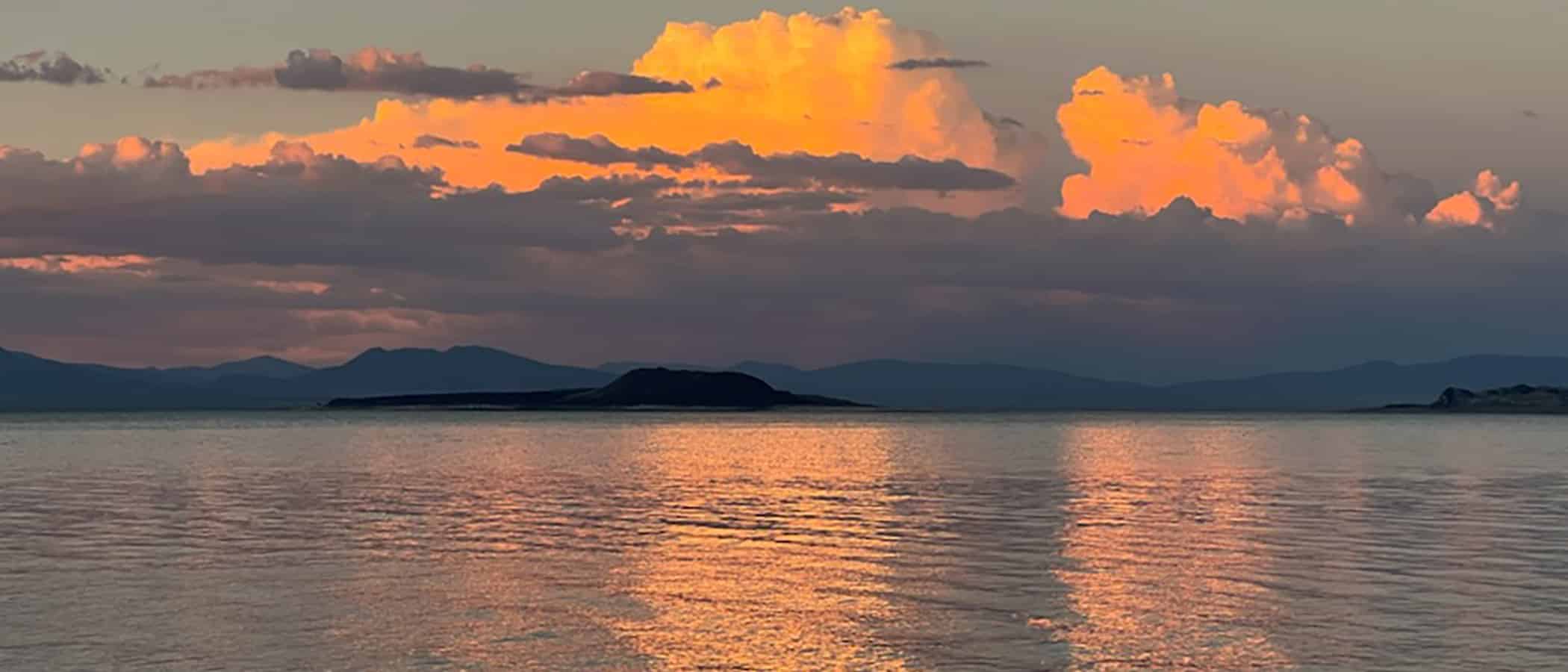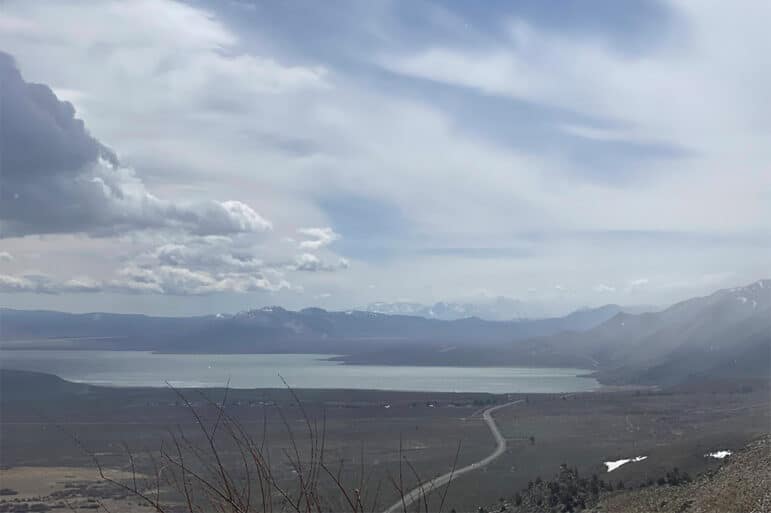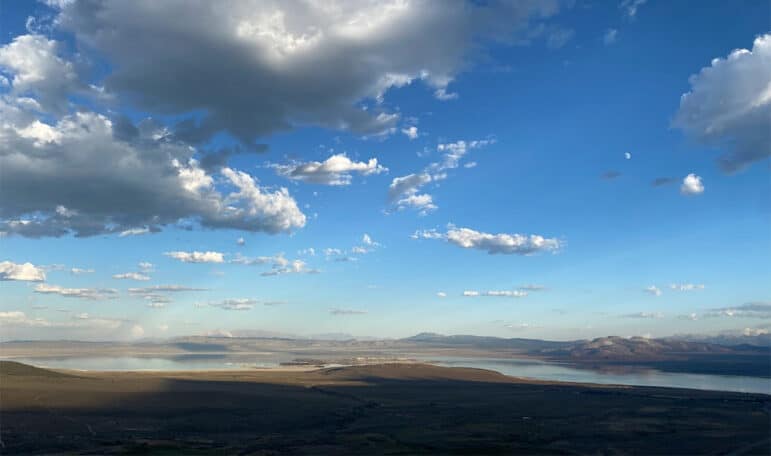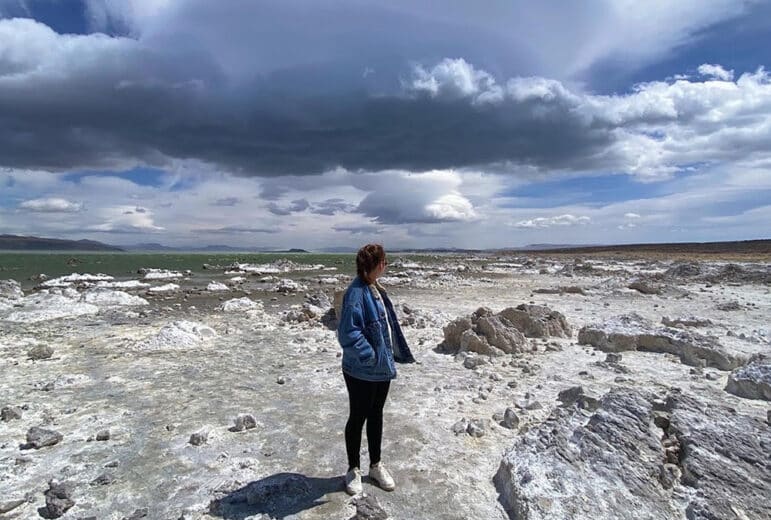
Time and time again you hear people talking about Mono Lake and the surrounding basin as a weird and otherworldly environment, but how is it seen from a true outside perspective? My name is Amelia, I am a seasonal intern here at the Mono Lake Committee, I am a recent graduate with a degree in freshwater and marine biology, and I live and grew up in Erie, Pennsylvania.
When people find out where I’m from they often ask me, “How did you find out about Mono Lake?” and to be frank, I found the position on a job board. I was looking for a seasonal position away from home to get out of my comfort zone. I had very few specifications in looking for a job and the message behind the Committee seemed sound, so I applied. Applying to this internship was actually the first time I had ever heard about the Committee despite my freshwater biology background, and I was actually concerned it was a scam. The interview process went well, and I decided if it was a scam, it was a really well-organized one. So, when the Committee offered me the position, I accepted immediately. Three weeks later in early April, I had packed my belongings into my car, and I was driving across the country to a place I had never even seen.

My first glimpse of the lake itself was from the vista point just north of the lake on Highway 395 and it took my breath away—literally, when I got out of the car the wind was blowing so hard that it made breathing a bit difficult. I was shocked by the size of the lake, I don’t know why, but I thought it would be smaller. The mountains surrounding the lake were covered in snow, the water was cerulean, and the islands on the lake stood out starkly in contrast. It was at that moment that I realized there was no turning back.
One of the first things I really observed when I got here was how brown the area was. The plants, the ground, the tufa, the mountains—all shades of brown. It was quite the change from my normal views back home where even Lake Erie is green in the summer. Coming here to Mono Lake was a really humbling experience in regards to water. Growing up in the east I had never really thought about water being a dwindling resource. We have Lake Erie, and it rains and snows all year long; why would I? In my first glimpses of the Mono Basin, I had noticed the difference, even if I didn’t realize what it was just yet.
When I settled into my new residence, it was snowing and cold but it was reminiscent of home, and once again I wasn’t thinking about the water. There was very little snow this year in the mountains compared to average, but to me, it looked fine. As I continued to learn throughout my time here, I realized just how important winter snow is for the state of the lake. When I arrived in April the water level in the lake was just shy of 6380 feet above sea level, and as I am writing this the lake has fallen just about a foot. That doesn’t seem like much, but the snowpack has almost completely melted, and the streams flowing into the lake are beginning to slow. The majority of the water to flow into Mono Lake this year has already done so, and yet the lake level is still falling.

It’s hard to look at the basin now and see things the same way I had when I first arrived. I went back to the vista point this week and instead of all the good I saw before; I see the full reality. And while the basin is still beautiful, there are alkaline dust storms being blown up on the east side of the lake from the exposed lake bed due to lowered lake level. The mountains are no longer covered in snow, and the wettest month this year was in August with about two inches of rain. The landbridge is getting alarmingly close to Negit Island, and although the California Gulls are finished nesting for this season, what does it mean for next spring?
The story of water is an important one here in the Mono Basin, and it’s one I will take home with me. I am already more conscious of my water use, but the lessons I have learned from the Committee are almost more valuable. Just a few people in the late 1970s altered this unique place for generations to come with their hope and perseverance. They were able to build this organization from the ground up by spreading the word and their passion for this place. It goes to show that one drop in the grand scheme of things can and does matter.

Mono Lake has a tendency to draw people in with its story and keeps them coming back time after time. In just the short while I have called Lee Vining and Mono Lake my home, I have fallen in love with this weird landscape, the people I have met, and the creatures who call this place home. We almost lost the lake years ago, but it was people just like me who had grown attached to the lake and all that it had to offer that saved this place. And despite seeing the new reality of the basin after my time here, I have a lot of hope for the future of Mono Lake.
Top photo by Amelia Beaumont.
